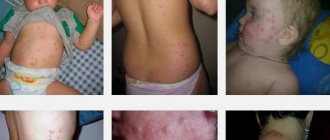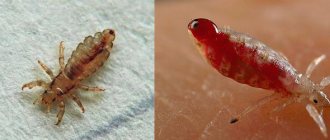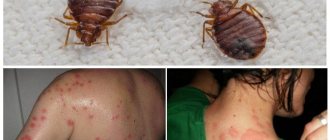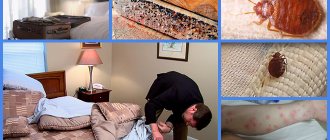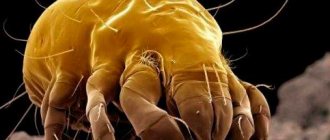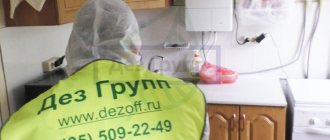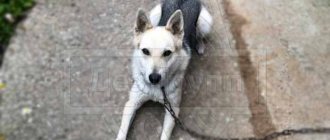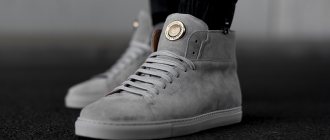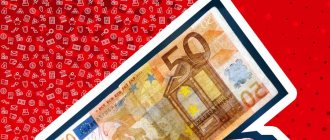If redness and an itchy rash are detected on the skin, it is necessary to exclude linen lice bites. Small blood-sucking parasites are easily carried on clothing and are well camouflaged in underwear and bedding. The problem can be encountered after visiting a hotel, a hospital ward, or a holiday in a children's camp. Therefore, it is recommended to know the symptoms and treatment features, and remember the rules of prevention at home.
Complications of pediculosis
A high risk of contracting head lice appears in the summer. This is due to the fact that the most favorable air temperature for the reproduction of parasites should be at least 30 degrees
Therefore, you should not neglect the simplest rules of personal hygiene and precautions:
- Do not use other people's combs, hair accessories, hats, towels or bed linen.
- In crowded places, wear your hair in a tight updo. It is harder for parasites to get caught in tightly styled hair than in loose hair.
- In public transport and public places, do not touch your head with high headrests. A louse can live on any surface without food for up to two days in search of a new victim.
- Always avoid close contact with strangers, especially head to head.
We suggest you read How to light a fire with an empty lighter
Detecting lice only by bite marks on the scalp is very problematic, especially at the initial stage of infection. But thanks to the distinctive signs, you can accurately diagnose and begin treatment on time.
If, despite all precautions, bed lice bites are found on a person nearby, then it is necessary to urgently take appropriate measures. First of all, it is necessary to treat the wounds that appear
Lice bites
But treating bites alone will not help completely get rid of linen lice. Comprehensive measures are needed. It is necessary to process all things using any available methods:
wash with boiling water or at 80 degrees; treatment with steam or disinfectants; ironing clothes, paying special attention to joints and seams; dry cleaning
We should not forget about sanitizing the room. It also needs to be treated with steam or special means to prevent re-infection with parasites, and you should also take a bath using anti-lice products designed to combat insects.
The main symptoms of pediculosis are: detection of lice and nits, itching of the skin, the presence of bite marks, scratches and other skin lesions, pyoderma. The cause of itching is saliva, anticoagulants contained in it and excrement of parasites.
One of the signs of pediculosis is the detection of lice and nits. Because nits exist only on the hair, they are more visible than adult insects, which spend most of their time on the skin.
Pubic lice live in the pubic area, perineum, scrotum, perianal fold, and rarely along the edges of hair growth on the head, in the armpits, on eyelashes and eyebrows.
Rice. 3. The head louse has an elongated shape and pigmentation on the sides. After absorbing blood, its abdomen turns purple.
Rice. 4. Head lice can be detected with the naked eye.
Rice. 5. The photo shows nits on the hair. Clearly visible to the naked eye.
Rice. 6. The photo shows pubic lice nits on the eyelashes.
Rice. 7. The photo shows pubic lice in the pubic area of a man and a woman.
Rice. 8. The photo shows lice and body lice nits.
Lice bites
Lice bites are accompanied by the appearance of papules, spots and severe itching. Lice bites with the mouth organ, which pierces the epidermis and sucks out blood. Piercing the skin is carried out using a soft proboscis tube, which is equipped with piercing needles.
The cause of itching after lice bites is saliva, anticoagulants contained in it and excrement of parasites. Redness after bites is associated with the development of an allergic reaction. Lice bites, due to the subsequent severe itching, lead to scratching of the skin and infection.
Rice. 9. Lice bites are carried out by the oral apparatus of insects.
Intolerable night itching occurs with body lice. Weak, but constant - with pubic. Significant itching is observed with head lice. Its cause is often an allergization of the body to insect bites and its waste products.
The intensity of itching decreases with decreasing sensitization and with habituation. Itching is accompanied by scratching followed by the formation of bloody crusts. Due to constant itching, patients often develop irritability and insomnia.
Rice. 10. Itching is the main symptom of head lice.
Head lice
Head lice is currently the most common disease among residents of our country. Outbreaks of the disease are observed during the period of children returning from places of public recreation - pioneer camps, dispensaries, camping sites.
This is a small insect that lives only on the scalp. In males it can parasitize on the mustache and ford. Lice do not fly or jump; they move with the help of six tenacious legs, crawling over short distances. The body of the parasite is elongated, up to 4 mm long, transparent or light brown. Lice eggs are called nits. The head louse attaches them to the host's hair somewhere at a distance of about 2 cm from the roots. Nits look like white translucent capsules 1–2 mm long. They can be mistaken for dandruff, but you won’t be able to shake nits off your head.
The lifespan of an adult is 45–50 days. Under suitable conditions, the eggs mature in a short time, and the larva appears already on days 4–5, and reaches sexual maturity after 14–21 days. One female lays about 300 nits during her life.
Where do head lice come from and how are they transmitted from one person to another? There are several possibilities for infection:
- upon contact with a patient;
- through hair care items - combs, combs, elastic bands, etc.;
- through bed linen;
- while swimming in a pool, lake or river.
Children are more susceptible to head lice; it often appears in preschool institutions and summer camps. The disease is detected visually when nits are seen when looking at the hair on the head.
What are head lice afraid of and how to get rid of them?
How to get rid of head lice and treat bites
The pharmacy sells a wide range of insecticides aimed at killing head lice. Here is a list of the most common drugs belonging to the category of pediculocides (remedies for lice and nits):
- mercury ointment;
- Medifox;
- hellebore water;
- "Pair plus";
- "Lauri";
- "Nittifor";
- "Knicks".
To treat bites, you can use boric ointment or Butadione. When purchasing the drug, be sure to read the instructions on how to treat head lice with it.
Some products do not affect nits, so they must be applied several times to destroy the hatched larvae. In any case, after removing lice, it is better to comb out the nits from the hair using a small comb dipped in a solution of table vinegar (diluted with water 1:1).
A fairly labor-intensive, but safe way to get rid of head lice at home is to comb out the adult parasites with a fine comb, and after 3-4 days dry the hair with a hot hairdryer, thus destroying the hatched larvae. Continue drying as long as the itching persists.
Simultaneously with the destruction of head lice, you need to boil or thoroughly iron all bedding and personal clothing, and check other family members.
What do body lice bites look like?
Body lice bites are often confused with bed bug or flea bites. Parasites live on clothing and can bite the entire body. This species is descended from the head louse. He has adapted to living in the seams of his clothes. It also lays eggs there. The pest can bite the human body once every four hours. These wounds itch a lot and make it difficult to sleep.
Body lice causes:
- formation of blisters, boils, papules;
- the occurrence of roughening of the skin;
- the appearance of pigment spots.
To understand that a parasite infection has occurred, it is worth looking at photos of linen lice bites. You can notice that the wounds are mostly located where the clothing is close to the body:
- armpits;
- sides;
- hands;
- lower legs.
Lice bites on the body may merge into large bluish spots, but they will not appear on the head. A body louse will not be able to bite the skin among the hair.
With a small number of insects in the hair, bites are difficult to identify - many parents mistake them for allergic wounds, mosquito bites, etc. Outwardly, this is a small swollen area of skin with a noticeable puncture site in the center and dried droplets of blood - this is what a louse bite looks like for 3-4 hours after the attack, then the skin evens out.
Oddly enough, the more lice there are, the easier it is to see their bites - on average, an insect feeds once every 2 hours, respectively, with a large number of them, the attack on the skin occurs constantly. Please note that nits do not bite, only adults do.
If treatment for pediculosis is not started in time, the scalp becomes covered with a thin crust, and pockets of purulent infections are noted. These are, of course, advanced cases, but even in pediatric practice they occur.
The location of the damage is the axillary and popliteal cavities, abdomen, inner thighs, and forearms. In a word, all those areas where the skin is soft and easily pierced. The affected areas itch, scratching is fraught with the introduction of secondary infections, the wounds do not heal for a long time, and then scar.
When linen lice are detected, treatment concerns not only the patient, but also complete disinfection of the entire surrounding area. Unlike head and pubic parasites, linen ectoparasites can live up to 20 days without a host and on a starvation diet. Somewhere, a couple of specimens will be missed during harvesting, and the treatment will have to start all over again.
Body louse is also called linen or body louse. If hygiene rules are observed, the disease is extremely rare. In their mode of parasitism, body lice are similar to bedbugs. They prefer to live in the folds and seams of linen and clothing, crawling onto the human body only to drink blood.
Body lice bites are often mistaken for irritation or allergies, or bites from other insects. Dots and small pimples with a diameter of 2–4 mm and severe itching appear on the stomach, shoulders and buttocks. An allergy to lice bites often develops, accompanied by severe redness and swelling of the skin at the site of injury.
Linen lice bites can become infected and cause pustular skin diseases. This parasite also serves as a carrier of infectious agents - typhus and other rickettsial diseases.
You can catch a body louse through contact with contaminated linen or clothing, often in public areas:
- hotels;
- summer camps;
- sanatoriums and holiday homes;
- long distance trains;
- trying on someone else's clothes.
If bed lice bites are found on the body, it is necessary to immediately take measures to destroy the insects in the apartment. Parasites quickly colonize a new space and actively reproduce.
Disinsection of the entire body, clothing and premises is carried out.
Wash all clothes and linen at high temperature and iron thoroughly, paying special attention to seams. Take a hot shower with laundry soap. Wear clean clothes
Repeat the procedure daily. Boil personal hygiene items and bed linen. Before washing, it is recommended to soak clothes and linen for 15–20 minutes in a weak solution of vinegar - this will weaken the chitinous shell of parasites and their eggs. To ensure that you get rid of body lice, all clothing, linen, crevices of upholstered furniture, mattresses and pillows must be treated with insecticidal agents. After washing, it is necessary to thoroughly ventilate all items.
During epidemics, guaranteed destruction of lice and their eggs is achieved by processing the material in a steam-formalin chamber.
How to treat linen lice bites? To heal skin affected by the parasite, ointments and lotions are used:
- hydrocortisone ointment;
- balm “Rescuer”;
- hydrogen peroxide - for primary disinfection.
Habitat
The main places where insects can be found are clothing whose folds and seams are in close contact with the body, especially underwear. Linen lice also feel good in dirty, unwashed bedding, mattresses and blankets, so they are constant companions of antisocial elements.
In medicine, there is even a disease called Vagabonda, which is translated from French as “vagrant disease.” A photo of linen lice bites during a severe stage of the disease shows the seriousness of this problem.
How to deal with a pest
The fight against linen lice involves not only compliance with hygiene standards, but also the treatment of clothing. Parasites will not bite the body if the following procedures are carried out.
- On a clean and dry body, wear underwear washed at maximum temperature using disinfectants and steamed.
- Washed clothes are left to “fry” for several days under the open rays of the sun.
- You can also use dry cleaning services to process items in a steam-formalin chamber.
- Clothes made from fabrics that cannot be treated at high temperatures are placed in the freezer (temperatures below 15 degrees are detrimental to parasites). The low temperature method will give positive results if used for a week.
The entire wardrobe is treated in one way or another. Moreover, treated items should be stored separately from insect-infested clothing. Sanitation of the apartment is also necessary.
Preventive actions
The process of eliminating parasites must be combined with the observance of preventive measures that will prevent re-infection. To do this, it is recommended to follow some rules:
- maintaining daily hygiene;
- periodic change of linen;
- use only personal items: robe, towel, sponge, various clothes;
- thoroughly washing and washing things upon returning from hotels, camps and other similar places;
- Regular washing of curtains, carpets, pillows using chemicals.
The presence of lice on clothing is not only an unpleasant and unaesthetic phenomenon, but also very dangerous to human health. Therefore, you should not be negligent about parasites found on your own things. The necessary destruction measures must be taken immediately, preventing the situation from escalating to extremes.
Danger of lice
Lice bites provide a lot of inconvenience and discomfort.
- The affected areas are very itchy. The itching intensifies at night, as parasites become more active at this time.
- A person suffers from insomnia, decreased ability to work, daytime drowsiness, and headache. Constant itching makes it difficult to concentrate and irritates the nervous system. Puts you in an awkward position in front of others.
- Scratching leaves scratches and infection enters the wounds. Ulcers and lumps appear. The addition of a secondary infection is dangerous for the development of other dermatological diseases.
- The substance that the louse injects into the human body provokes a severe allergic reaction. It manifests itself as unbearable itching, redness, burning, and rash. If a person has a tendency to allergies, the situation requires immediate treatment. Antihistamines and antiallergic drugs are prescribed.
A louse bite is dangerous for the development of dangerous diseases. Insects are the causative agents of typhoid fever. If after bites there is general weakness, malaise, and body temperature rises, you should urgently seek help from specialists.
Differences between lice bites and other insect bites
Appearance of bites of various pests
It will be easy to identify bloodsuckers if you know how lice bite. These are the only insects that can live among human hair. Therefore, lice bites on a person will be located:
- on the head;
- on the pubis;
- in the armpits;
- In men, insects can live in the beard and mustache.
Linen lice can be confused with fleas or bedbugs because their traces are located throughout the body. The main difference is that the bites of the latter are often arranged in a row. A body louse doesn't bite like that.
Another characteristic symptom of lice is blue spots. Their appearance is caused by insect saliva.
In addition to the parasite that lives on the human head, other types of lice are also common. They can cause specific diseases.
Unlike head lice, with this disease the itching is not so severe. Bite marks are reddish, with a blue tint. Due to the coverage of a large surface of the skin, dermatitis often develops, compactions, peeling, and purulent foci appear.
This parasite is considered the most dangerous. Representatives of the species are carriers of typhus, typhoid fever and Volyn fever. They live in all climate zones, on all continents. They hide in the folds of clothes and bedding. They can move from person to person in crowded places. Pediculosis, caused by this type of lice, is accompanied by severe itching of the entire body, roughening of the skin, the appearance of deep abrasions and pigmentation.
The bites of head and pubic ectoparasites are quite characteristic - they cannot be confused with any others, despite the fact that the scalp and groin are rarely attacked by anyone other than them
It is worth paying attention not only to the localization, but also to the accumulation of bites. If there is a lot of damage on the head and groin, there are swollen areas, a bluish halo - all this speaks of lice. In most cases, people prefer to treat head lice themselves.
Therefore, it is worth knowing what a bite of a particular insect looks like in order to choose the right treatment tactics
In most cases, people prefer to treat head lice themselves. Therefore, it is worth knowing what a bite of a particular insect looks like in order to choose the right treatment tactics.
Features of lice bites:
- Each bite presents a red swelling that causes itching. These small pimples are separate from each other, and there is a noticeable small hole in the center.
- A louse bite is very similar to a flea bite. The parasite cuts the skin with its incisors and penetrates into the capillaries. The difference is that painful sensations arise over time, and not immediately. It also looks a little like a mosquito, but the internal opening is not visible on the pimples. The tick leaves a large, hard lump.
- Pimples appear where seams or folds of linen fit tightly to the body. Mostly it occurs on the neck, around the waist, in the armpits, and in the groin area.
- A distinctive feature is the injected anti-clotting substance. It is from this substance that allergies appear, causing rashes and inflammation.
The difference between the way a louse bites and the bites of other insects lies in the relative painlessness; the site of the lesion does not become noticeable immediately, but only after some time. Fleas bite much more painfully, the sensation is similar to needle pricks.
Mosquito bites resemble punctures made by lice, only because they are painless. The appearance of the lesions is completely different. When lice bite, a puncture mark is visible in the middle of the wound.
Harm and transmitted diseases
Living in fairly unsanitary conditions and periodically moving from place to place, these parasites carry very dangerous and serious diseases, such as:
- Quintan.
- Relapsing or typhus.
Not only the diseases described above can be brought, a number of many other dangerous infections can also enter the human blood through insects.
The greatest danger is the bite of these linen lice. Bites are often confused with mosquito bites and allergies. Redness immediately appears on the skin and severe itching occurs. You can recognize parasites only by seeing them.
Since the saliva of lice causes severe irritation and leads to inflammation of the skin, when scratching there is a risk of introducing infection through the wounds and worsening the situation. With chronic lice, the skin can become very thick and red. Often, full-fledged scar tissue forms and very severe peeling is observed. Linen lice are to blame for all this
How to remove body lice?
Once body lice has been diagnosed, treatment begins immediately. Since the source of the spread of ectoparasites is clothing, they are taken first of all
It is washed at 90° C, dried in fresh air, and then ironed, paying special attention to the seams on the cuffs, collars and folds. It is better to boil the bedding and, after drying it in the sun, iron it again
Hairpins, combs and other personal accessories should also be doused with boiling water.
It is better to boil the bedding and, after drying it in the sun, iron it again. Hairpins, combs and other personal accessories should also be doused with boiling water.
To increase the likelihood of getting rid of lice, you can treat clothes with insecticides and then wash them.
For these purposes the following will be useful:
- Pyrethrum in powder form.
- An aqueous solution (0.15%) of karbofos.
- An emulsion consisting of kerosene and soap (20%).
These compounds are used to treat all seams on bedding, mattresses, and clothing. Things can be exposed to weak acetic acid, which has a destructive effect on the chitinous integument of arthropods.
The steam-formalin chamber is capable of destroying body lice at all stages of development, including nits.
After processing, things are thoroughly dried and ventilated.
Treatment of body lice is carried out as prescribed by a doctor. For a mild form of the disease, you can use “Zvezdochka”, “Rescuer” or any lotion containing ethyl alcohol. For allergies, take antihistamines and anti-swelling medications.
Prevention of head lice
- To avoid infestation with body lice, you should remember that you should not use other people’s clothes, towels, or bedding. Upon returning from a trip, you must take a shower, change all travel items and put them on only after washing and ironing.
- Body lice prefer natural fabrics and do not like items made of synthetics and silk. This factor can be taken into account when forming a wardrobe before a long journey.
- Insects are attracted to aromas with spicy notes, and are repelled by the smell of milkweed, fern and tansy. A bouquet of these herbs will help repel parasites.
- Mattresses and pillows should be exposed to the sun in summer and to severe frost in winter. For heat treatment, you can also use dry cleaning services.
- Carpets and upholstered furniture should be cleaned regularly with special compounds.
Any type of lice is unpleasant and dangerous to the health of both children and adults. And if someone in the family suffers from any lice, others will definitely join. To prevent this from happening and to cope with this scourge in a short time, you can use various effective means, such as:
AntiV comb
It will help you get rid of uninvited guests in 2-3 days. After a week, a control combing will be required. The comb teeth are made of stainless steel. The teeth are located at a distance of only 0.09 mm and have special notches that help remove both nits and adult parasites from the hair. The notches, like a file, help cut the nit and destroy the embryos inside.
The price of the AntiV comb is 1000 rubles.
See the review of the best lice combs and where you can buy them - bezklopa.ru/grebni-ot-vshey-i-gnid.html
Shampoo Paranit for nits and adult lice
The shampoo contains clearol mineral oil (69%) - a product obtained from natural vegetable fats of ylang-ylang, coconut and anise. Natural oils lead to dehydration of the parasite’s body and also cause it to suffocate. The product is non-toxic to humans.
As a side effect, but extremely rarely, an allergy may develop with redness, rash and itching. The shampoo is applied to dry hair. Leave for 10 minutes. Afterwards, rinse thoroughly and comb with a special comb included with the product. A week later the procedure is repeated.
A 200 ml bottle of shampoo costs about 400 rubles.
Full Marks product
The pediculicidal drug Full Marks contains the following active ingredients:
- Isopropyl myristate.
- Cyclomethicone.
They cause tissue dehydration and subsequent death of insects.
Reviews of the drug Full Marks for lice and where to buy it - here - bezklopa.ru/sredstvo-ful-marks-ot-vshey.html
The composition is rubbed into dry hair, left for 10 minutes and then combed with a special Full Marks comb. Each treatment requires 50 ml of liquid.
A 100 ml bottle costs 500 rubles.
If you take the time to destroy different morphotypes of lice, then in a day or two you can forget about them.
Types of lice and what their bites look like, symptoms
It is not surprising that when associating the word pediculosis with head parasites, few people remember the existence of pubic or bed lice. The fact is that these varieties of multi-legged “bloodsuckers” are found much less frequently.
However, it’s still not worth relaxing, because no one is immune from the danger of “picking up” a rare parasite while trying on something in a store, in a sauna, or at a doctor’s appointment. Therefore, remembering the proverb: forewarned is forearmed, it is necessary to study the symptoms of the presence of lice and learn methods for eliminating insects.
Linen bed lice
The linen (bed, clothes) louse is an almost invisible insect, at first glance resembling a small bug. The parasite lives in bedding, seams of blankets, pillows or items of clothing. Moreover, preference is given to contaminated products made from natural fibers.
Finding themselves in a blanket that has not been washed for a long time, the 5-mm bloodsuckers begin to lay eggs (nits). Only one female is capable of laying about 300 eggs in just one month. The stimulus for the development of hatched babies is the heat generated by a person during sleep or wearing a dress/shirt with nits attached to the seams.
Single bites of linen lice are indistinguishable from traces left by mosquitoes, midges, and bedbugs. The following symptoms appear at the site of puncture and injection of saliva:
- barely noticeable swelling with a diameter of 2–4 mm;
- redness (even where there are no bites);
- in the center of the red spot there is a drop of dark, dried blood;
- unbearable itching and pain (after some time);
- in people prone to allergies, pigment spots appear at the sites of bites;
- in advanced cases, ulcers form at the sites of scratching, and then purulent, difficult-to-heal wounds.
With a large-scale infection, numerous randomly located bites resemble a rash or merge into one huge spot.
Body lice bite up to four times a day, in places where blood vessels are located as close as possible to the surface. As a rule, these are the shoulders, back, neck, stomach, buttocks. In young children - a face. Unlike their head counterparts, bed lice do not live and do not “feed” on the scalp.
How long does it take for bed lice bites to go away?
After removing the insects, the wounds take the same amount of time to heal as regular skin lesions (rarely it takes more than four days). However, if body lice have bitten large areas of the body, the recovery process is unlikely to take less than a week.
Pubic lice
In America and European countries, lice pubis has reached epidemic proportions, affecting mainly people under 35 years of age. According to recent statistics, among citizens of the Russian Federation, no more than 8% of residents of megacities suffer from “intimate” parasites.
Contrary to popular belief, this is not a sexually transmitted disease, because you can “catch” pubic lice not only from a sexual partner, but also after a number of health procedures: swimming pool, solarium, sauna, massage, etc.
Folk remedies
There are also some folk methods for removing lice that are worth mentioning here:
Dust soap
A wonderful pediculicide, actively used by people. First, the soap is grated. The resulting shavings are dissolved in water and beaten. To completely remove lice, one treatment is sufficient. Remember that you need to carry out the processing procedure while wearing rubber gloves. Contact of dust soap with the skin is extremely undesirable. After the procedure, the laundry should be rinsed thoroughly. Do not neglect safety tips, as dust soap is a toxic substance.
Tar soap
This drug should be used like dust soap. Unlike the latter, tar soap does not pose a danger to human health. But the effectiveness of this remedy is much less.
Some herbs are also used against body lice, but it must be said that they are even less effective than tar soap, and they are used more as a prophylactic agent or for low degrees of infection.
You can wash infected laundry in mint decoction; the smell is simply disgusting to lice, but this remedy, of course, cannot be called effective. Lemon juice is also used to remove parasites; it is added in large quantities to the water in which contaminated laundry is washed. Also for this purpose, use an alcoholic infusion of angelica or a mint decoction.
Methods of transmission of pediculosis
A person on whom lice live, regardless of the degree of his infestation, is a source of lice infestation.
There are the following ways of transmitting pediculosis.
Contact path. Possible through close contact with an infected person. Lice crawl onto the body, hair, things of a healthy person, or parasites may be shed (accidentally or specially) onto a new host from an old one. It is very easy to become infected with head lice.
Sexual path. This is the main method of pubic lice infestation. During close contact of the pubic areas, the flats move to a new host.
Through care items, such as mattresses, pillows, scarves, hats, hoods, underwear, hairpins and elastic bands, washcloths, towels, combs, etc. After using care items by a person infected with lice, lice may remain on them for some time. the next time the items are used, they may crawl onto a new owner. Also, nits can mature in things and objects, which over time turn into adults. As a rule, head lice are transmitted through hats, pubic lice through underwear, and clothing through underwear.
Through the water. Infection occurs in places where a large number of people bathe, both in water (pool, sea, river, lake) and on land. These insects can live in water for almost 2 days, and while swimming they may well find their way to a new owner. Also on the beach they can crawl out of the sand.
Once they reach a new host, lice crawl to easily accessible places for parasitism. And depending on what stage of the life cycle the insect is at - a larva or an adult - after maturation or immediately, it begins to reproduce, that is, to lay nits. Each adult louse lays eggs every day throughout its life: a body louse - up to 16 pieces per day, a head louse - up to 4, a pubic louse - up to 3.
So, having settled on a new host, lice are ready to quickly spread to everyone around him. Body and head lice spread most quickly in places with large crowds of people (prisons, military barracks, communes, dormitories, public transport, children's groups) and in places where unsanitary conditions flourish and people do not take care of things, care items and the body (antisocial families, homeless habitats, shelters, places of deprivation of liberty, as well as places without unhindered access to water).
A place where at least one person is infected with head lice is called an epidemic focus.
Why do children most often get head lice? The fact is that they come into contact with other children every day and do not keep a distance from each other during games. Also, children often confuse their belongings or personal hygiene items with other people's and may sleep on each other's pillows. There may be lice on toys (most often soft ones).
Fighting methods
There are quite a lot of tips on how to get rid of uninvited guests. Below are tips that will help you get rid of bed lice once and for all.
- If you suspect the presence of bed lice, you should take the hottest possible shower. The body should be thoroughly washed with laundry soap with a high alkali content.
- The surest remedy for such lice is thorough disinfection of all bedding. Linen and other wardrobe items that are in doubt should be soaked in a 20% solution of kerosene and soap. Things should be soaked for about forty minutes.
- Freshly squeezed cranberry juice will help in the fight against linen lice nits. It is recommended to use the juice to treat areas of the body where itching appears.
- All items intended for personal use, such as hairpins, hair ties, and combs, should be thoroughly boiled. After boiling, they should be placed in the sun and left for two to three days.
- An excellent way to scare away unwanted guests from your bed is ordinary dried tansy, which can be purchased at any pharmacy. All you need to do is just spread the leaves on the bed.
- Another way to get rid of linen lice is aromatic oils and tar soap. Lice are especially susceptible to lavender oil and tea tree oil.
Finally, it should be said that time plays an extremely important role in the fight against these invisible parasites. If at least one individual is detected, the entire home and clothing should be disinfected. If you delay just a few days, the lice will become noticeably more numerous and getting rid of them will be much more difficult.
Be careful and attentive to your health - choose the doctor that suits you and make an appointment by phone: 8 (499) 969-20-36 (for residents of Moscow and the Moscow region).
How to distinguish lice bites from other insect bites
Parasites, due to the structural features of the oral apparatus, cannot bite the victim in the same way as other pests that attack people. This is due to the short proboscis and the need to immerse part of the head into the epidermis. When eating, these features force the parasite to raise the back of its body upward.
Linen louse
What body lice bites look like on the body, photo
There are some characteristic signs that allow you to detect the appearance of these parasites in time:
- a small tubercle with a pronounced red dot, and what distinguishes bite marks (from linen lice) is the appearance of a larger amount of blood than in the case of other insects, as a result a significant crust remains when the blood dries;
- lack of systematicity in the movements of parasites; they bite in the same places where they live;
- linen lice make one puncture of the skin at one time, as a result, after eating, one tubercle remains;
- parasites attack people around the clock, they have no time limits (like bedbugs), so itching occurs at any time of the day or night, which disturbs sleep;
- traces of bites from linen lice are found in limited areas of the body - where the outer integument is covered by clothing;
- there is a red dot in the center in any area where the parasite entered the proboscis.
Allergy to body lice bites
Bites on different parts of the body
Linen bug bites, photo
Parasites differ significantly in the structure of the oral apparatus and the characteristics of their vital functions. External signs of their bites are also highlighted, which allows you to quickly determine the type of pest. Key Features:
- the appearance of hyperemia, the red spots are clearly defined;
- bites form a kind of track on the body;
- traces of contact with parasites are found in areas where there is no clothing, since pests cannot get under the woven material; for them, the need to overcome barriers in the form of body hair is a problem;
You can see photographs of the outer coverings after a bed bug attack. This will allow you to see clear trails of red spots on the victim's body.
Bedbug bites on a child's leg
What does a bedbug bite look like?
Linen flea bites, photo
Insects bite at a level of 1-1.5 m from the floor. This feature is explained by the method of movement - fleas jump. They cannot fly, but due to the structure of their paws and body they rise quite high. When a person is standing, bites will appear at the level of the lower limbs, thighs, and abdomen (localization depends on the height of the victim). If you take a horizontal position (lie down on the sofa), then bites can be found in other areas: upper limbs, neck, shoulders, stomach, which also depends on the presence of clothing.
After contact with fleas, more intense discomfort occurs. In addition, the external signs of bites differ. So, after a flea attack, a small red dot remains; there is no pronounced hyperemia if there is no tendency to allergies. Otherwise, a red outlined spot appears; in the center you can see a dot of a darker color.
Scratching after linen flea bites Flea bites on different parts of the body
How to distinguish from mosquito bites, photo
These parasites have a long, thin proboscis. It minimally injures the skin, so there is no pronounced central red dot left when bitten. Characteristic features of these insects:
- swelling: a fairly large mark remains after contact with the pest, even if there is no tendency to allergies;
- hyperemia appears;
- severe itching, but it is less intense than in cases when bed bugs or lice attack;
- localization on open areas of the body; mosquitoes do not fly under clothes, except by accident (for example, under a blanket if a person sleeps without pajamas)
- mosquitoes attack more often in the evening and at night, but traces of contact with these parasites may also appear during the day.
Mosquito bite Allergic reaction from a mosquito bite
Bed louse propagation methods
The insect has enormous fertility. Just one female is capable of laying from 5 to 14 nits (eggs) per day. Thanks to the special mucus secreted by the female, the egg is firmly attached to the fibers of the material until it is fully matured.
The lifespan of one individual is 35 days. During this time, she manages to lay off 200 to 400 nits. The growth of eggs and the maturation of louse larvae occurs due to the parasitic lifestyle on the human body.
As soon as the insects sense the warmth and odor of the body, they begin their activity. Spreading over the body, they choose the most suitable place, pierce the skin with a special proboscis and suck out the amount of blood necessary for further existence. Their color changes from pale gray to bright brown and even brown.
The bed louse is a very tenacious insect. In the absence of a human body and, accordingly, food, they easily survive up to one week. Finding themselves, even after such a long period of time, in an environment favorable to themselves, they quickly restore their strength and continue their parasitic way of existence.
But, after 5-7 days, without access to the human body, the body louse quickly dies. That is why most often this type of insect lives on a contingent of people who are deprived of the opportunity to frequently change clothes and linen: refugees, soldiers in the field, beggars or tramps.
Symptoms
Body lice live and lay eggs - nits - exclusively on things, on fabric. They cannot stay on a person’s head for a long time, since they are not adapted to living in such an environment. Lice lay eggs between the seams of clothing, under them, inhabiting clothing, pillows, and bedding in abundance. Less commonly, they can multiply on vellus hair, penetrating there at the moment when a person is close to the habitat of the parasites. The louse cannot remain outside the parasitism for more than 4 days, since without feeding it will die. At the moment when the parasite is on the verge of death, it becomes extremely active and moves quickly, looking for a way to survive.
Symptoms of human contact with parasites appear as:
- severe itching;
- skin rashes;
- inflammation of the skin;
- the appearance of allergic spots at the site of the bite;
- ulcerative lesions (with prolonged contact with lice);
- furuncle;
- pyoderma.
Most often, the lower back, sides, buttocks, neck, armpits, and thighs are affected by bites. The hairy part of the skin, as a rule, remains clean. With body lice, lice bites take a very long time to heal. The bite site itches, itches, and becomes covered with allergic spots. After bites, body temperature may rise, nausea, indigestion, and headaches may occur. Severe itching can lead to nervous disorders.
If these signs appear, you must seek help from a specialist, otherwise complications may arise in the future. The most common of them are purulent rashes, blue spots at the site of bites, and large ulcers. In addition to these troubles, the body louse is dangerous because it is a carrier of diseases such as typhus and relapsing fever.
